How To Calculate Refinance Break Even Point For Mortgage Loans
Updated: Jan 6
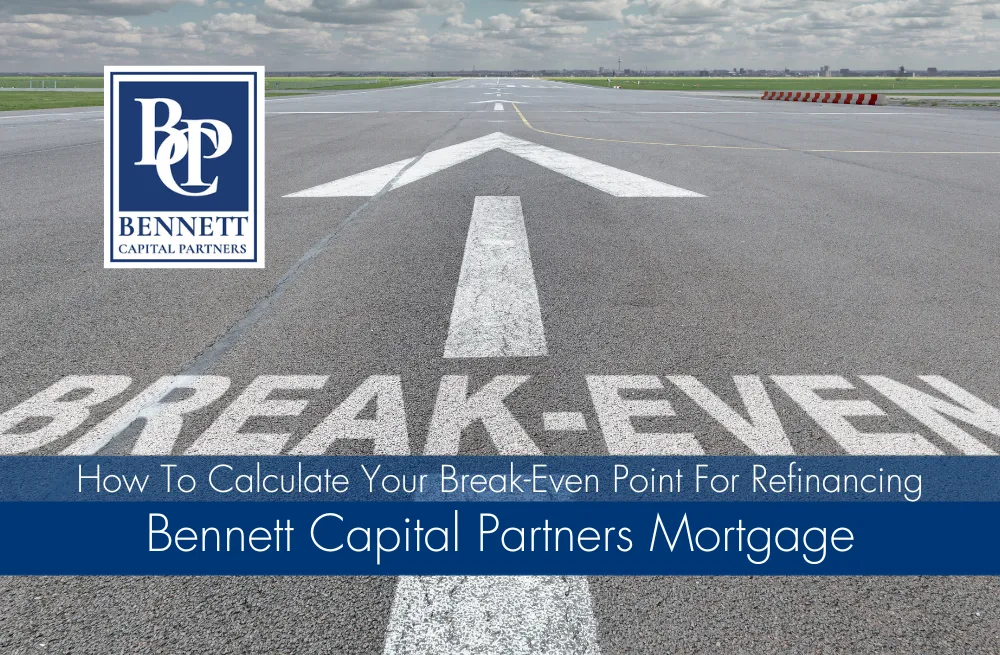
Calculating the refinance break-even point is crucial when considering a mortgage refinance. It signifies the moment when the savings from a new loan outweigh the costs of refinancing, marking the start of real financial benefit. Understanding this point is essential for homeowners to assess the practicality and profitability of refinancing.
This article offers a detailed, easy-to-follow guide on how to calculate this vital figure. It ensures that you have all the knowledge you need to make a well-informed decision about your mortgage refinancing options.
Quick Navigation - Click the link below to jump to that section..
What Is The Break-Even Point?
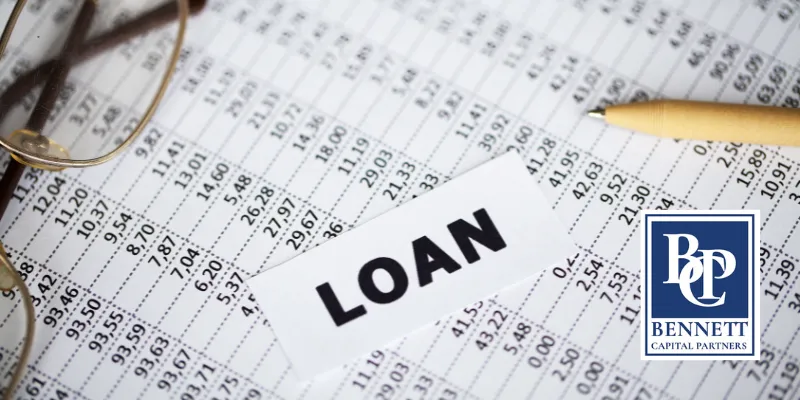
e break-even point is a financial term referring to the point at which the cost of a product, venture, or loan is equal to the income generated from it.
Evaluating a refinancing option necessitates a comprehensive analysis of factors such as the amount of time it will take to recoup closing costs, the interest rate, and the potential tax implications.
Calculating the break-even point can be a useful tool for determining whether or not refinancing is a wise decision.
The break-even point can be calculated by comparing the cost of the loan to the amount of money saved in interest payments over the term of the loan.
Definition Of Break-Even Point
The break-even point in the context of refinancing is a calculation that reflects when the total amount of money saved by obtaining a new loan with lower interest rates, outweighs the cost to pay off an existing loan on a home.
It is typically calculated as the number of months it will take for equity gain and cash savings from refinancing to cover all costs associated with the refinance. This includes closing costs paid to the lender, appraisal fees, points charged, or any other fees related to taking out a new loan.
When evaluating whether or not to refinance your mortgage, understanding where you stand in terms of your break-even point can be crucial. To determine this value, one must consider how long they plan to stay in their current home, repayment terms available from lenders, current market values and interest rates offered by financial institutions.
If you wish to save money over time through refinancing but are unsure if it’s worth doing so due to high upfront costs associated with it then calculating your break-even point could provide insight into a decision.
A good rule of thumb for assessing when it may be beneficial to refinance is if you plan to remain in your property for more than two years and have access to loans offering lower interest rates than what was previously obtained. In such cases, homeowners should look at both short-term and long-term benefits before making final decisions - assessing potential monthly payments against estimated equity gains.
Reasons For Evaluating Refinancing Options
Evaluating refinancing options is an important step when considering whether or not to refinance a mortgage.
While obtaining lower interest rates and cash savings are clear benefits of refinancing, careful consideration must be given to the associated costs of closing, appraisal fees, points charged, and any other related expenses that may arise.
Homeowners should also factor in their estimated equity gains over time as well as their repayment terms to assess if they will break even on their initial investment.
Additionally, understanding how long one plans to stay in their property can help determine if it makes sense to refinance with products such as a cash-out refinance, rocket mortgage refinance or a traditional refi.
Calculators like a Refinance Cash Out Mortgage Calculator or Cash Out Refinance Mortgage Calculator can provide useful insight into potential monthly payments versus expected equity gain from refinancing.
Ultimately, each homeowner should take into account all factors before making an informed decision about whether or not to pursue refinancing for maximum financial benefit.
Factors Influencing The Break-Even Point
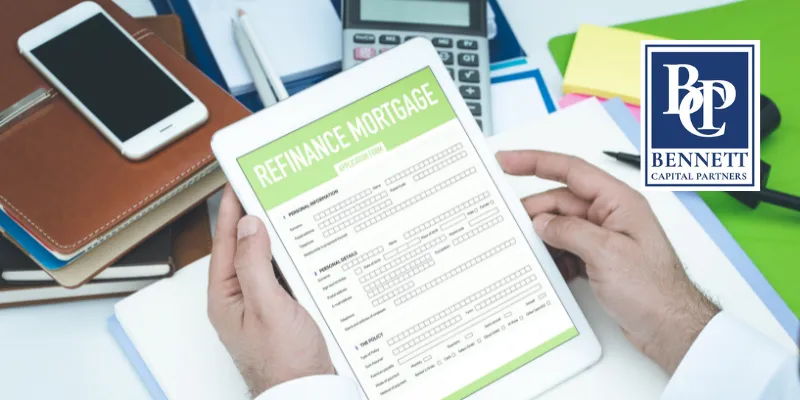
The length of a loan term is an influential factor in the calculation of a break-even point when refinancing.
Closing costs can greatly affect the break-even point and should be taken into consideration.
A lower interest rate can assist in reducing the break-even point, however, the total amount saved must exceed the cost of the closing fee in order to make it a viable option.
Variables such as the life of the loan, the amount of the loan, and the interest rate can also have an impact on the break-even point.
A higher interest rate can lead to a larger break-even point than if the loan term was shorter.
Additionally, the amount of prepayment penalty should also be factored into the break-even point calculation.
Overall, the break-even point can be calculated with a variety of factors in mind.
Loan Term
Refinancing a mortgage loan is an important decision with many considerations.
One key factor to take into account when calculating the break-even point for refinancing is the loan term of the new loan.
The length of time that you have on your loan can significantly affect how much money you will save or pay over the life of the loan and should be factored in when deciding whether to refinance.
Cash-out refinances, where borrowers draw equity from their home, carry higher interest rates than traditional rate/term refinances and often require longer terms as well.
Homeowners considering these types of loans should use a cashout refinance calculator or speak with a financial advisor to compare options and ensure they understand what is cash out refinance, identify if a home equity refinances loan or refinancing vs home equity loan is best for them, determine if it's worth taking advantage of current cash out mortgage refinance rates, and consider what does cash out mean before making decisions about their finances.
Ultimately, understanding details such as how long it would take to recoup closing costs associated with refinancing and evaluating potential savings across different scenarios are essential steps in determining whether refinancing makes sense financially.
Closing Costs
When refinancing a mortgage loan, it is important to consider closing costs as part of the break-even point calculation. Closing costs are fees associated with securing and completing a loan that must be paid by the borrower upfront at the time of closing. These can include money for origination fees, appraisal fees, title insurance, taxes, or transfer fees.
Depending on the type of refinance and lender chosen, these costs may differ significantly from one another and should be considered when assessing which option is best. For example, if an individual has enough equity in their home to opt for a cash-out refinance versus a rate/term refinance they may have to pay higher closing costs but could potentially reduce their debt while lowering their interest rate over time.
It is also important to understand how long it would take to recoup those additional upfront expenses associated with refinancing before making any decisions about changing terms or lenders. This is called the break-even point –the period where savings exceed closing costs–and often varies depending on what kind of loan you choose and your current situation.
Borrowers who plan ahead and carefully evaluate all options available will find themselves better prepared to make an informed decision that works within their budget and reduces their overall debt burden over time.
Interest Rate
When refinancing a mortgage loan, the interest rate plays an important role in determining how much money borrowers will save over time. A lower interest rate generally translates to a lower monthly payment and fewer costs associated with closing on the new loan.
Lenders typically provide loans at varying interest rates depending on the borrower’s credit history, income level, and other factors such as collateral offered for the loan. Borrowers should compare offers from different lenders to determine which one provides the best deal in terms of both total cost and potential savings.
Furthermore, many lenders offer free tools or calculators that can help borrowers estimate their break-even point by factoring in changes in their monthly payments due to differences in interest rates. Ultimately, it is up to each individual borrower to decide what type of refinance works best within their budget and timeline goals.
Step-By-Step Guide To Calculating The Break-Even Point
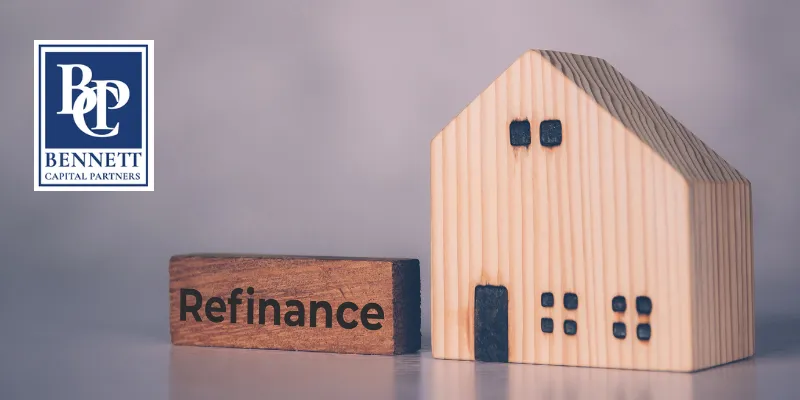
When determining the break-even point when refinancing, it is important to consider the closing costs associated with the loan.
These costs may include but are not limited to, lender fees, third-party fees, and prepaid items.
Additionally, it is important to consider the tax implications of refinancing, as the interest paid on a loan may be tax deductible.
Therefore, it is important to research the details of the loan and consult with a tax professional to ensure the best financial decision is made.
Determining Closing Costs
When it comes to calculating the break-even point for refinancing, one of the most important steps is determining closing costs.
It's essential to understand which fees are associated with taking out a new loan in order to make an informed decision about whether or not it makes financial sense to refinance.
Closing costs can vary widely depending on the type of loan and other factors, so it’s important to check with your lender in advance.
Fees generally include appraisal costs, title searches, recording fees, origination charges, points (if any), document preparation fees, and more.
Taking out a higher interest rate loan could result in substantially higher closing costs than if you take out a loan at a lower rate; therefore, before making any decisions about refinancing, it’s crucial that you have an accurate assessment of all potential expenses related to this process.
Knowing these details will help ensure that you make the best option for yourself financially.
Considering Tax Implications
When considering the tax implications of refinancing a home loan, it is important to understand that any money paid in closing costs is not deductible on your taxes.
However, you may be able to deduct some of the interest that was paid on the new loan as long as you meet certain qualifications.
Additionally, if there are points associated with the loan and they are used to buy down the rate, those points can be deducted over time.
If you have significant equity in your home or plan to use it for investment purposes, you should also consider how this will impact your tax situation.
You may qualify for certain rights and advantages such as lower capital gains rates on profits from selling your home or deductions related to rental income generated from property investments.
It’s important to weigh all of these factors carefully before deciding whether or not refinancing makes financial sense.
There are many pros and cons when it comes to refinancing a home loan, so evaluating potential benefits and impacts is essential in order to make an informed decision about what will work best for you financially.
Knowing all of the details upfront can help ensure that you get the most out of the process while minimizing risks along the way.
Analyzing Your Break-Even Point
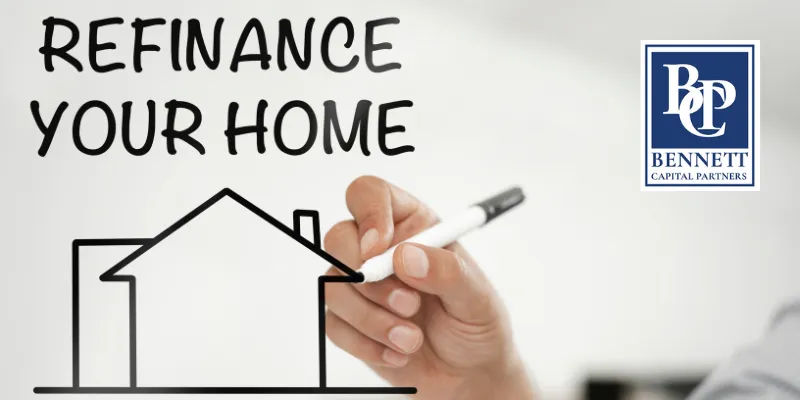
Calculating the break-even point of refinancing involves assessing the costs associated with the new loan, the savings the new loan will provide, and the amount of time it will take to recover the costs.
It is important to take into account the total cost of the new loan, as well as any fees associated with the refinancing process.
Refinancing can provide a number of benefits, such as lower interest rates, reduced monthly payments, and access to additional funds.
Additionally, refinancing can be a way to consolidate multiple loans into one, potentially reducing the total amount of interest paid.
Calculating Your Break-Even Point
Accurately calculating your break-even point for refinancing is an important step in analyzing the potential benefits of doing so.
The first factor to consider when determining this point is the funds you have available. Different types of credit may be necessary to access sufficient funds, and it’s important to thoroughly understand the terms and conditions associated with each before making a decision.
Additionally, it’s imperative that you take into account all costs associated with repayments over the life of the loan as well as any other factors related to applying for financing in order to accurately determine how much money will need to be repaid.
It can also be beneficial to research what offers are available in your area, since some properties might offer better interest rates or more flexible repayment plans than others.
Having all relevant information on hand will help ensure that you make an informed decision about whether refinancing is right for you. With careful consideration and thorough analysis, understanding your break-even point can potentially save time and money in the long run.
Benefits Of Refinancing
Refinancing your home's mortgage can mean many things to a borrower. It could be an attempt to secure a lower interest rate, reduce the amount owed on the loan or make monthly payments more affordable by extending the term of the loan.
Additionally, it offers borrowers access to equity in their homes, allowing them to use it for things like remodeling and repairs. By researching lenders and understanding what type of mortgages are available, borrowers can find options that best meet their needs.
Borrowers should also review any potential fees associated with refinancing as well as any other costs such as closing costs or appraisal expenses before making a final decision. All these factors play into whether refinancing is worth considering in terms of time and money spent compared to the end result.
Taking all this information into account will help ensure that borrowers make informed decisions about their financial futures.
Additional Tips For Assessing Refinancing Options
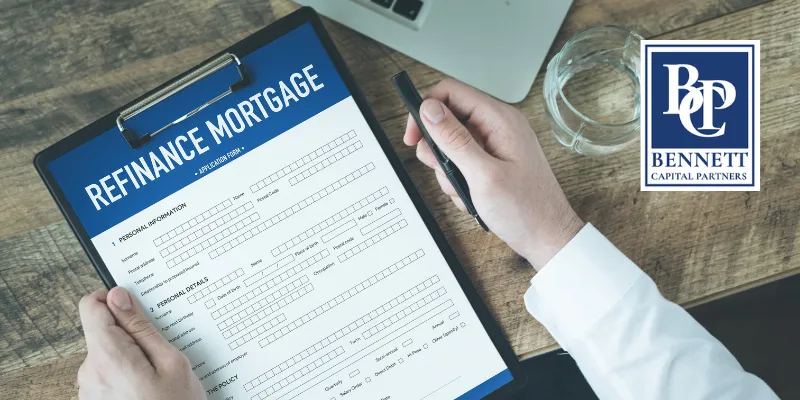
When considering whether to refinance, it is important to find a lending option that best fits your individual needs. To work out which refinancing package will offer the most benefit for you, there are several requirements you must determine.
First and foremost, evaluate what type of loan site can get the lowest interest rate and fees associated with the process.
Additionally, consult with mortgage experts who can advise on how much equity in your home you should keep in order to maintain an appropriate balance between risk and reward.
By doing this research ahead of time, making a decision about refinancing becomes easier. Furthermore, it allows you to compare different packages from multiple lenders in order to choose one that works best for you.
Therefore, it is essential to take sufficient time researching before committing to any particular lender or loan product.
Conclusion

Refinancing can be a beneficial option for homeowners, but it is important to understand the break-even point before making any decisions.
To calculate this point, one must consider various factors such as interest rates and loan terms.
By following the step-by-step guide outlined in this article, individuals will have all of the necessary information to make an informed decision about their refinancing options.
Additionally, analyzing and understanding the break-even point helps individuals assess which strategies are most effective and cost-efficient when considering refinancing.
Ultimately, by properly assessing a refinance situation through analysis of its break-even point, individuals can maximize their financial benefits while minimizing risks associated with major financial decisions.
FAQ's
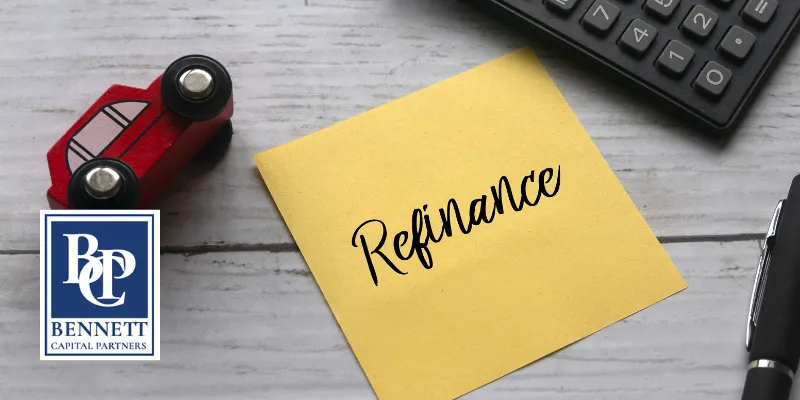
What is the break-even point in refinancing?
The break-even point refers to the moment when the savings from refinancing your mortgage equal the costs associated with the refinance process. It is an essential factor to consider when evaluating whether refinancing is a financially sound decision for you.
What factors influence the break-even point in refinancing?
Several factors can influence the break-even point, including closing costs, the new interest rate, the loan term, differences in monthly payments, and potential tax implications.
How do I calculate the break-even point for refinancing my mortgage?
To calculate the break-even point, follow these steps:
Determine the total closing costs of the new loan.
Calculate the monthly payment difference between the current and new loans.
Consider tax implications (if applicable).
Divide the total closing costs by the monthly payment difference to find the break-even point.
What should I consider when analyzing my break-even point?
When interpreting your break-even point, consider factors such as how long you plan to stay in your home and the potential benefits beyond the break-even point, like a lower interest rate or improved cash flow.
What tips can help me assess my refinancing options more effectively?
To better assess your refinancing options, consider shopping around for the best interest rates and closing costs, and consult a mortgage professional to analyze your specific financial situation.
Related Articles in Our Refinancing Blog Posts
Looking for more information on refinancing your mortgage? Check out these informative articles:
Cash-Out Refinancing Vs. Rate-And-Term Refinancing: Which One Is Right For You? - Learn about the differences between these two types of refinancing and which one may be the best fit for your financial situation.
How To Calculate Your Break-Even Point For Refinancing: A Step-By-Step Guide - This comprehensive guide will walk you through the process of determining your break-even point for refinancing, helping you make an informed decision.
Mortgage Refinancing For Home Improvements: Unlocking Your Home's Equity For Renovations - Discover how refinancing your mortgage can help you fund home improvement projects and increase the value of your property.
Refinancing Your Adjustable-Rate Mortgage (ARM) To A Fixed-Rate Mortgage: Why And How To Do It - Considering making the switch from an adjustable-rate mortgage to a fixed-rate mortgage? Learn about the benefits and how to do it in this helpful article.
Mortgage Refinancing in Florida: The Ultimate Guide to Lowering Your Monthly Payments & Saving Money - Learn about the benefits of mortgage refinancing in Florida, eligibility requirements, costs, and more in this ultimate guide.
Streamline Refinancing: A Simplified Process For FHA, VA, And USDA Loans - Find out how to simplify the refinancing process for FHA, VA, and USDA loans.
The Costs Of Refinancing: Understanding Closing Costs, Fees, And Potential Savings - Get a breakdown of the costs and fees associated with refinancing, as well as potential savings.

Philip Bennett
Philip is the owner and Licensed Mortgage Broker at Bennett Capital Partners Bus NMLS # 2046862. He earned his degree in Accounting and Finance from Binghamton University and holds a Master's Degree in Finance from NOVA Southeastern University. With more than 20 years of experience, Philip has been a leader in the mortgage industry. He has personally originated over $2 billion in residential and commercial mortgages.
Learn more about Philip Bennett's background and experience on our Founder's page. Whether you're a first-time homebuyer or a seasoned real estate investor, our team is here to help you achieve your real estate goals. Don't wait any longer, contact us today and let us help you find the right mortgage for your needs.
Discover helpful tips and tricks on mortgages by reading our blog posts
Understanding Co-op Financing: Mortgages For Co-ops Explained. To learn more about how this program can help you purchase your Co-op. Click here to read the full article
Mortgage Solutions for Newly Employed Individuals: Exploring Job Offer Loans. To learn more about how this program can help you purchase your dream. Click here to read the full article
DSCR loan program: debt service coverage ratio mortgage | Bennett Capital Partner To learn more about the DSCR loan program can help you with your investment objectives. Click here to read the full article
Can You Still Get a No-Doc Mortgage in 2023? To learn more about how this program can help you get your dream mortgage. Click here to read the full article
